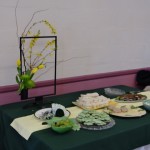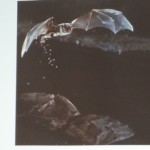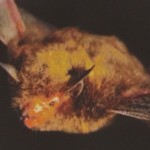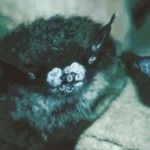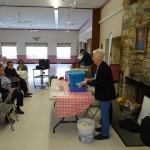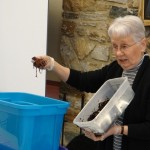Our March program was a talk from Fred Seitz on behalf of Bats International. He pointed out that in the Greco-Roman world, bats were associated with the dead and the underworld due to their association with caves and nighttime feeding. Europeans thought bats were evil spirits and of course Hollywood’s fascination with vampires hasn’t helped their image.
Here’s some bat facts that many people don’t know.
Bats provide an organic control for harmful insect pests. Bats have controlled pecan nut case bearer, fall webworm, walnut caterpillar, stinkbugs, twig girdler and hickory shuck worm. Corn earworms infest thousands of acres of corn in just about every state; bats, especially the Mexican Free-tail will eat the moths, each bat eating about half its weight in insects. Include the bloodsucking mosquitoes we hate!
Some bats are pollinators, as their fur gets coated with pollen while they seek nectar from plants like the Agave and Saguaro cactus. If you like tequila, thank the bat for its role here. Bananas, mangoes and guavas rely on bats for fruit pollination–these have night blooming flowers that are large and fragrant.
Bats use echolocation/ultrasound to navigate and hunt. They are related/evolved from shrew like mammals. A very few bats do subsist on blood of mammals (like cattle) and there are even bats that catch fish.
Bat guano is a highly nutritious fertilizer for plants.
we have heard about White Nose Disease which has been devastating to bat communities. It is a fungus that spreads through close proximity. A Georgia State PhD candidate is working on a bacterial control for this fungus that will thrive in the low temperatures that contribute to the White Nose fungus. It is possible that a sheet impregnated with the helpful bacterial could be hung in the places where the bats congregate, especially during hibernation to be removed in spring.
A member asked how one might humanely remove bats who may be congregating in an attic. Mainly, one must EXCLUDE the bats by preventing their entry until they relocate elsewhere. Given that their ingress areas may be hard to find and bats so small, this may be quite a project.
Following the program, Carol LaFon demonstrated how she constructs her worm farm boxes (vermiculture) using moistened shredded newsprint and vegetable table scraps. Worm castings are considered gardening gold fertilizer.
Our hostesses had prepared a St. Pat’s Day themed tea with one of Jan Halman-Miller’s unique metal floral displays as a centerpiece.
- Pouring the tea
- Probably designed by the talented Roger
- Green and yummy eats!
- Fred traveled a long way to speak to us.
- Hunting
- One of our native bats
- Fungal disease
- These boxes come inside for the winter
- Carol expressed how the uninitiated might feel touching worms
- I think either Barb or Carmen brought this to show



